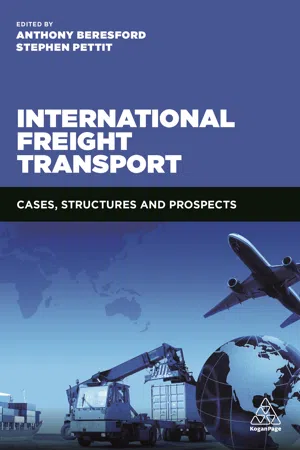01
Demand, supply and freight rates: the shipping of global trade
HASSIBA BENAMARA , UNCTAD, Switzerland
JAN HOFFMANN, UNCTAD, Switzerland
FRIDA YOUSSEF, UNCTAD, Switzerland
Introduction
With over 80 per cent of global trade by volume and 55 per cent to 71 per cent by value – depending on the data source and methodology – being carried by sea, maritime transport remains the backbone of globalization and at the heart of cross-border transport networks that support supply chains and enable international trade.
Maritime transport is the backbone of globalization and at the heart of cross-border transport networks that support supply chains and enable international trade. An economic sector in its own right that generates employment, income and revenue, transport, including maritime transport, is cross-cutting and permeates other sectors and activities.
Maritime transport enables industrial development by supporting manufacturing growth, bringing together consumers, intermediate and capital goods industries, and promoting regional economic and trade integration. The importance of transport has been further recognized by newly adopted Sustainable Development Goals (SDGs) which integrate infrastructure and transport as an important consideration.
Against this background, this chapter considers relevant developments affecting demand and supply of maritime transport infrastructure and services as well as related trends determining profitability and the performance of freight markets. While the chapter emphasizes recent trends unfolding in 2015, some longer-term patterns are also highlighted to gain greater insights into the overall maritime transport and trade landscape. An outlook for maritime transport is set out against the backdrop of continued global uncertainty and downside risks which have, since the 2008 financial crisis and the 2009 Great Recession, been weighing down on the world economy, trade and maritime transport.
Among other factors, slower global economic and trade growth, energy and oil price developments, advances in technology and digitization, the rise of e-commerce, chronic mismatch in ship supply capacity and demand, as well as growing environmental and sustainability imperatives are identified as key factors currently redefining the maritime transport sector and shaping its ability to effectively meet the growing demands of the 21st century, while at the same time maintaining profitability and competitiveness.
Demand: drivers and trends
Although a number of factors are increasingly redefining seaborne trade patterns, maritime trade flows continue to be largely determined by developments in the macroeconomic landscape. Over the past four decades, seaborne trade volumes have generally moved in tandem with economic growth, industrial activity and merchandise trade, albeit at varied speeds. Historically, world merchandise trade volumes have grown about twice as fast as world gross domestic product (GDP), but the trade-to-GDP growth ratio continues to decline, and in recent years, world merchandise trade has been expanding at a relatively slower rate either matching or below world GDP growth levels. In 2015, the trade-to-GDP growth ratio was estimated at 0.62, down from 0.94 in 2014 and 1.4 in 2013.
While international trade is still influenced by the remnants of the 2009 downturn, the question that arises ...
